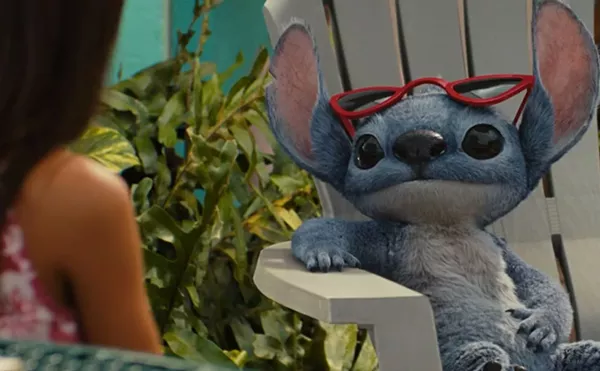
Audio By Carbonatix
[
{
"name": "GPT - Leaderboard - Inline - Content",
"component": "35519556",
"insertPoint": "5th",
"startingPoint": "3",
"requiredCountToDisplay": "3",
"maxInsertions": 100,
"adList": [
{
"adPreset": "LeaderboardInline"
}
]
}
]
A school in Tehran ends its day by disgorging a noisy stream of young girls who, shepherded by a few of their teachers, rush across the busy thoroughfare which runs just aside the school’s gates. The camera follows their crossing before moving on to a leisurely 360-degree pan of the intersection, observing the chaotic clog of the traffic, pausing to watch as an elderly man with a cane attempts and fails to cross the street, arriving, finally, back at the school where a 7-year-old girl is waiting for her mother to pick her up.
This remarkable opening sequence establishes the tone of writer-director Jafar Panahi’s film, which is a combination of an extremely clever formalist exercise and a semidocumentary look at an Iranian metropolis where modernity and tradition exist in an uneasy synthesis.
When her mother fails to show up, the young girl, Mina (Mina Mohammad-Khani), decides to try to get home on her own. Though assertive and confident, she’s also young and female, and much of the first part of the film finds her stuck in the back of one of Tehran’s gender-segregated buses, listening to a babble of voices from which emerges the occasional explicit but cautious complaint.
About a third of the way into the film, a radical shift occurs when young Mina looks directly into the camera and announces that she doesn’t want to act anymore. The subtle control of the semidocumentary style gives way to the more ragged and haphazard style of actual documentary, as various members of the crew unsuccessfully try to convince her not to walk off the film.
Realizing that they’ve forgotten to remove her mic, the filmmakers decide to follow her in a car and film her surreptitiously. The movie now becomes the story of the "real" Mina trying to make her way home, which turns out to be a lot like the fictitious opening, only with a rawer look and sound. Though the premise just barely sustains the film’s narrative, it’s ingenious, and Panahi exploits its subversiveness with subtlety and humor.





